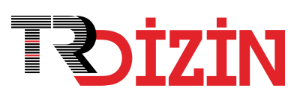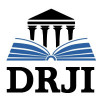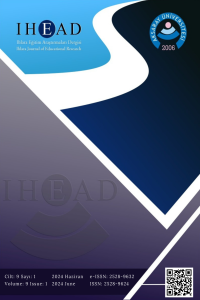Research Article
Aim & Scope
Ihlara Journal of Educational Research aims to publish original scientific studies produced at national and international levels and contribute to the education field. The journal aims to create an international platform where academicians, teachers and graduate students in the field of education and sub-fields of education can come together, both among themselves and with policymakers and other stakeholders of education, to discuss the innovations that need to be made to provide a better education opportunity for future generations.
Ihlara Journal of Educational Research, operating within the Faculty of Education at Aksaray University, is an international, peer-reviewed journal published twice a year. Our journal includes quantitative, qualitative, and mixed-method research articles on all fields of education, review studies, and book analyses.
Author Guidelines
• General Information
Articles should be uploaded to the system in MS Word file.
All texts in the article should be in Times New Roman font.
The article should be maximum 8000 words excluding references.
Articles should be prepared in accordance with the IHEAD Article Template.
• Article Title
The Turkish and English title of the article should be written in 12 pt, centered and bold. Maximum 14 words should be used excluding conjunctions. In the title, only the first letter of each word, except conjunctions, should be capitalized, and conjunctions should be written in lower case. (Makale Başlığı/Article Title Style should be selected in the template)
• Author Information
Author names and any information about the authors should not be written in the articles uploaded to the author system. Author information will be added during the editing process. (Yazarlar/Authors Style should be selected in the template)
• Abstract
At the beginning of the article, there should be a short abstract in Turkish and English to inform the reader about the study. Abstracts should be justified and written in 9-pt font. The word count in abstracts should be in the range of 150-200 words. 3-5 keywords should be given under the abstracts. Keywords should be separated by semicolons. References, table, or figure numbers, etc. should not be used in abstracts. Manuscript submission, acceptance and publication dates will be added later. These sections will be initially left blank as in the template. (Özet/Abstract Style should be selected in the template)
Suggested structure for an article:
Introduction, Methodology, Findings, Discussion, Conclusion, Recommendations, References, Attachments (if any), Extended Abstract
It is recommended to be in the form. The author(s) may add additional sections according to the content of the study.
• Article text
The texts/paragraphs in the article should be written in 10 pt font size, justified and single-spaced. (Metin/Text style will be selected for texts/paragraphs)
• Headlines
First level headings should be used in chapter titles. Main section headings should be bold, centered and in 11-point font size, capitalizing the first letter of each word except conjunctions. (1. Başlık/Title Style should be selected in the template)
Second-level headings should be used for primary subheadings. Primary subheadings should be bold, left-justified, 11-point font size, with the first letter of each word capitalized, except for conjunctions. (2. Başlık/Title Style should be selected in the template)
Secondary subheadings should use a third-level heading. Secondary subheadings should be written in bold, left justified and 10-point font size, capitalizing only the first letter of the first word of the title. (3. Başlık/Title Style should be selected in the template)
If you have a fourth level subheading, write it in bold, at the beginning of the paragraph, in 10 pt, left justified and italicized, and continue with a period at the end. Do not use more than four heading levels.
• Tables
Vertical lines should not be used in tables. Horizontal lines should be used under and above the column headings and at the bottom of the table. Tables should be double justified. The text in the table should be written in 9-pt font size, justified, or left justified and single-spaced. Each table should have a table number and table title. Table number and title should be written at the top of the table. Table number and title should be written in 10-pt font size, justified, and single-spaced. In the table title, the number should be bold, and the title should be italicized. Make sure that the table numbers are sequential and cited in the text. (Tablo Başlık style will be selected for the table title and Tablo Metin style will be selected for the text in the table)
Example:
Table 1. Write the title of the table in sentence format with the first letter of the first word capitalized and all letters of the other words lowercase and put a period at the end.
• Figures
Figures should be placed in the center of the page. There should be a number and title for each figure/image. The figure number and title should be written at the bottom of the image. Figure number and title should be written in 10-pt font size, centered, and single-spaced. The relevant figure should be cited in the text and explained if possible (Şekil Başlık style will be selected for the figure title).
Example:
Figure 1. Write the title of the figure in sentence format with the first letter of the first word capitalized and the letters of the other words lowercase and put a period at the end.
• References
References should be prepared in accordance with APA 7 standards. Each reference should be written in 10-pt font size, justified, single-spaced and the first line should be 1 cm hanging. APA 7 spelling standards should be followed in the writing of in-text citations, tables, figures, and references. Make sure that each reference in the references is cited at least once in the text and that the reference of any citation given in the text is shown in the references. (Kaynak style will be selected for references)
Some basic examples in reference writing:
Book
Berk, L. E. (2022). Infants, children, and adolescents. SAGE Publications.
Book Chapter
Burnard, P., & Power, A. (2013). Issues in conceptions of creativity and creativity assessment in music education. In K. Thomas, & J. Chan (Eds.), Handbook of research in creativity (pp. 158–172). Edward Elgar.
Article
Deutsch, D. (2016). Authentic assessment in music composition: Feedback that facilitates creativity. Music Educators Journal, 102(3), 53–59. https://doi.org/10.1177/0027432115621608
• Appendix
Authors may submit an appendix after the references if needed. If more than one appendix is submitted, the appendices should be numbered. The appendices should be cited within the article.
• Extended Abstract
An extended English abstract should be included at the end of the article. In this abstract, critical information about the article should be presented. The titles Purpose, Method, Results, Discussion, Conclusion, and Suggestions can be used as a framework. The extended abstract should be at least 700 and at most 1000 words. The text should be typed in 10-point font size, justified, and single-spaced. Extended Abstract section is not required for articles written in English.
• Other Information
1. Use a FULL STOP to separate the ones digit from the tenths digit in decimal notation (e.g., 107.8; 0.25).
2. Write the numbers specified in decimal notation with a maximum of three digits after the comma (rounding the longer ones to the thousandths digit).
3. The width of the tables should be arranged so that they are justified on both sides of the page.
4. DOI numbers of the references should be included as much as possible.
5. References that are not cited in the article should not be added to the "References" section.
• Article Template
Not all article writing rules may be covered in this article. For this reason, an article template has been created that you can use in your article manuscript. We kindly ask you to use this template when submitting an article to our journal. If the writing process is done in another file, you can upload your article to the system after transferring it to this template. If the information in the template conflicts with the information given in the writing rules, please follow the structure in the template. A writing style is defined for each section in your article. The table below indicates which style to use in which section. We kindly ask you to select the relevant writing style when writing on the IHEAD article template or after copying a text into the template.
Styles to be used in text formatting:
Content Style
Text/Paragraphs Metin/Text
Level 1 Headings (Introduction, Method, etc.) 1. Başlık/Title
Level 2 Headings 2. Başlık/Title
Level 3 Headings 3. Başlık/Title
Article Title Makale Başlık
Turkish/English Abstract, Keywords, Article information Özet/Abstract
Article, Figure, Table footnotes Dipnot
Reference Kaynak
Figure headings Şekil Başlık
Table headings Tablo Başlık
Texts in the table Tablo Metin
Itemized contents Madde/Liste
After typing/pasting the full text of your article into the IHEAD article template, check that the fonts match the styles in the template.
Ethical Principles and Publication Policy
Ethical Principles and Publishing Policy
1. Original works need to be submitted to the journal.
2. Submitted articles need not have been published elsewhere or submitted to a different journal for publication.
3. When uploading articles to the system, author names, addresses, and all information identifying the authors must be deleted.
4. The author(s) must correctly cite the sources used in the article's writing by following ethical principles.
5. The names of people who don’t contribute to the article need not be written as authors, and the author order of an article applied for publication shouldn’t be changed, authors should not be removed, and authors shouldn’t be added.
Within the scope of ethical rules, the studies for which Ethics Committee Permission are requested to be evaluated in our journal are presented below:
1. Any research conducted with qualitative, quantitative or mixed approaches that requires data collection from participants using survey, interview, focus group, observation, experiment and interview techniques,
2. Research using humans and animals, including materials and data, for experimental or other scientific purposes,
3. Clinical research conducted on humans,
4. Research conducted on animals,
5. Retrospective studies under the personal data protection law
In this context, the following points must be considered in the studies submitted to our journal:
• It needs to be mentioned in case presentations that an "Informed Consent Form" has been acquired.
• If other people's scales, questionnaires, or images are utilized, it needs to be indicated that permission was sought from the proprietors.
• It needs to be emphasized that the intellectual and artistic works used are protected by copyright.
Publication Ethics
The ethical duties and responsibilities outlined below have been formulated concerning the guidelines and policies published by the Committee on Publication Ethics (COPE), considering open access principles.
Ethical Responsibilities of Authors
The author(s) who submit a manuscript to the Ihlara Journal of Educational Research are expected to adhere to the ethical responsibilities outlined below:
-The publication processes applied in the Ihlara Journal of Educational Research are the basis for developing and disseminating knowledge in an impartial and reputable manner. In this regard, the implemented processes reflect the quality of authors' work and the institutions supporting them. Peer-reviewed studies are endeavours that concretize and uphold the scientific method. At this juncture, all stakeholders of the processes (authors, readers, researchers, publishers, referees, and editors) must adhere to ethical principles and standards. Within the scope of Ihlara Journal of Educational Research publication ethics, all stakeholders are expected to carry the following ethical responsibilities:
-The studies submitted by the author(s) are expected to be original. For this reason, a similarity rate report is requested for all studies submitted to our journal. The author(s) must provide complete and accurate citations and/or quotations when utilizing or referencing other works in their submissions.
-Individuals who have not made intellectual contributions to the manuscript's creation should not be listed as authors.
-All submissions intended for publication must disclose any potential conflicts of interest and relationships, if any, that could constitute a conflict of interest. If applicable, the financial support sources of the study need to be specified along with grant/fund numbers and other reference numbers.
-Authors may be requested to provide raw data related to their articles during evaluation. In such a case, authors must be prepared to submit the required data and information to the editorial and scientific boards.
-The author(s) must have a document showing that they have the rights to use the data used, the necessary permissions related to the research/analyses, or that the consent of the experimental subjects has been obtained.
-If the author(s) becomes aware of an inaccuracy or error in their published, early view or under review manuscript, they have an obligation to notify the journal editor or publisher and cooperate with the editor in correcting or withdrawing the manuscript.
-Authors cannot submit their work to more than one journal at the same time. Each submission can be initiated following the completion of the previous submission. The study published in another journal cannot be submitted to the Ihlara Journal of Educational Research.
-Authors are responsible for making the corrections suggested by the editorial board on time. Manuscripts returned due to untimely revisions cannot be re-evaluated.
-In studies derived from the thesis, the author and the thesis advisor must be included as authors. Although it is not compulsory, the second advisor, if any, may also be included as an author. Apart from these, different authors can be included only if their contributions are explained.
Ethical Tasks and Responsibilities of Editors
The editors and field editors of Ihlara Journal of Educational Research must have the following ethical duties and responsibilities based on the "COPE Code of Conduct and Best Practice Guidelines for Journal Editors" and "COPE Best Practice Guidelines for Journal Editors" published by the Committee on Publication Ethics (COPE) as open access:
a) General tasks and responsibilities:
The editors are responsible for every publication in the Ihlara Journal of Educational Research. Within the scope of this responsibility, the editors have the following roles and obligations:
-Strive to meet the information needs of readers and writers,
-Ensuring the continuous development of the journal,
-Conducting the processes to improve the quality of studies published in the journal,
-Supporting freedom of expression,
-Ensuring academic integrity,
-Maintaining task/duty processes without compromising intellectual property rights and ethical standards,
-Demonstrating openness and transparency in terms of publication in matters requiring correction and clarification,
b) Relations with the reader
Editors must decide by considering the expectations of knowledge, skills and experience needed by all readers, researchers, and practitioners. They need to pay attention to the contribution of the published studies to the readers, researchers, practitioners, and scientific literature and that they are original. In addition, editors must consider the feedback from readers, researchers, and practitioners and provide explanatory and informative feedback.
c) Relations with authors
The tasks and responsibilities of the editors towards the authors are as follows:
-Editors need to make positive or negative decisions based on the significance, originality, validity, clarity of expression, and alignment with the journal's aims and objectives.
-Manuscripts that align with the publication's scope should be subjected to the initial review stage unless they exhibit significant issues.
-Editors should only consider positive peer review recommendations if a significant issue is related to the manuscript.
-New editors should only alter decisions made by previous editors regarding manuscripts if there is a significant issue.
-The "Blind Peer Review and Evaluation Process" must be disclosed and published, and editors should take measures to prevent deviations from the defined processes.
-Authors need to receive clear and informative notifications and feedback.
d) Relations with reviewers:
The tasks and responsibilities of the editors towards the referees are as follows:
-The selection of referees should be in accordance with the subject matter of the study.
-Editors must provide referees with the information and guidance they may need during the evaluation stage.
-Editors must be vigilant regarding conflicts of interest among authors and referees.
-In peer review, referees need to keep their identities confidential.
-Editors need to encourage referees to evaluate the manuscript impartially, scientifically, and objectively.
-Editors need to establish practices and policies that enhance the performance of reviewers.
-Necessary steps need to be taken to update the pool of reviewers dynamically.
-Editors must refrain from discourteous and unscientific evaluations.
-Efforts must be made to ensure that the pool of referees comprises a broad spectrum.
e) Relations with the editorial board:
Editors need to ensure that all members of the editorial board progress following the publication policies and guidelines. Editorial board members must be informed about and kept abreast of publication policies. Additionally, editors:
-Editors should ensure that editorial board members evaluate manuscripts unbiased and independently.
-New editorial board members should be selected based on their potential contributions and appropriate qualifications.
-Editors should refer manuscripts to editorial board members within their areas of expertise for evaluation.
-Regular interaction with the editorial board is essential.
-Editors should organize meetings at specified intervals to discuss publication policies and the development of the journal.
f) Relations with the journal owner and publisher:
The relationship between editors and publishers is based on the principle of editorial independence. By the written contract between the editors and the publisher, all editorial decisions are independent of the publisher and the journal owner.
g) Editorial and blind review processes:
Editors must implement the "Blind Review and Evaluation Process" in the journal publication policies. In this context, editors ensure that each study's evaluation process is completed fairly, impartially, and timely.
h) Quality assurance:
Editors are responsible for publishing each article in the journal per the journal's editorial policies and international standards.
i) Protection of personal data:
Editors are responsible for protecting personal data regarding the subjects or images included in the evaluated studies. Unless the explicit consent of the individuals used in the studies is documented, they are responsible for rejecting the study. Editors are also responsible for protecting the personal data of authors, reviewers and readers.
j) Ethics committee, human, and animal rights:
Editors ensure that human and animal rights are protected in the studies evaluated. They are responsible for rejecting the study without ethics committee approval for the subjects used in the studies. Also, editors are responsible for protecting the individual data of author (s), referee (s), and reader (s).
k) Prevention against possible abuse and misconduct:
Editors are obliged to take precautions against possible misconduct and malfeasance. In addition to conducting a rigorous and objective investigation in identifying and evaluating such complaints, the editor is responsible for sharing the relevant findings.
l) Ensuring the integrity of academic publications:
Editors must quickly correct errors, inconsistencies, or misleading judgments.
m) Protection of intellectual property rights:
Editors are responsible for protecting the intellectual property rights of all published articles and defending the rights of the journal and the author(s) in case of possible violations. In addition, editors are obliged to take the necessary measures to ensure that the contents of all published articles do not violate the intellectual property rights of other publications.
n) Constructivism and openness to discussion:
Editors need to consider the convincing criticisms of the works published in the journal and show a constructive attitude towards these criticisms. They need to give the author(s) of the criticized studies the right to reply. They should not ignore or exclude studies with negative results.
o) Complaints:
Editors must carefully review complaints from authors, reviewers or readers and respond in an enlightening and explanatory manner.
p) Political and commercial concerns:
The journal's owner, the publisher, and no other political or commercial factors influence the independent judgment of the editors.
r) Conflicts of interest:
The editors guarantee the independent and impartial completion of the publication process, considering conflicts of interest between the author(s), reviewers, and other editors.
Ethical Responsibilities of Reviewers
Evaluation of all studies by "Blinded Review" directly affects the quality of the publication. This process provides confidence through objective and independent evaluation of the publication. The evaluation process of the Ihlara Journal of Educational Research is conducted with the principle of double-blind reviewing. Reviewers cannot communicate directly with the authors; evaluations and comments are transmitted through the journal management system. Reviewer comments on evaluation forms and full texts are transmitted to the author(s) through the editor during this process. In this context, the referees who evaluate studies for the Ihlara Journal of Educational Research are expected to have the following ethical responsibilities:
-Only manuscripts related to their area should be accepted for review.
-Referees who cannot review the potential manuscript within the specified period should notify the editors immediately and decline the invitation to review, and a new referee should be appointed.
-They should evaluate with impartiality and confidentiality.
-If they think they face a conflict of interest during the evaluation process, they should refuse to review the study and inform the journal editor.
-By the principle of confidentiality, they should destroy the studies they have reviewed after the evaluation process. They can only use the final versions of the studies they have examined only after publication.
-Evaluate objectively only the content of the study. They should not allow nationality, gender, religious beliefs, political beliefs and commercial concerns to influence the evaluation.
-Conduct the evaluation constructively and courteously. They should not make derogatory personal comments containing hostility, slander and insult.
-Carry out the work they accept for evaluation on time and with the above ethical responsibilities.
Ethical Responsibilities of the Publisher
The Editors and Editorial Board of the Ihlara Journal of Educational Research need to act with the awareness of the following ethical responsibilities:
-Editors are responsible for all processes of the studies submitted to the Ihlara Journal of Educational Research. In this regard, editors are the decision-makers without considering economic or political gains.
- Independent editorial decision-making is granted.
-Protects the ownership and copyright of every article published in the Ihlara Journal of Educational Research and must keep a record of every published copy.
-It is responsible for taking measures against all kinds of scientific misconduct, citation mongering, and plagiarism related to editors.
If You Encounter an Unethical Situation
If you encounter any unethical behaviour or content in the Ihlara Journal of Educational Research other than the ethical responsibilities mentioned above, please report it via an e-mail to ihead.editor@aksaray.edu.tr.
Price Policy
Dergiye ilişkin herhangi bir ücretlendirme bulunmamaktadır.
Indexes
Other Indexes
Journal Boards
OWNER(On Behalf of Education Faculty)

Kamil YILDIRIM received his Ph.D. in educational sciences, majoring in educational administration. Yıldırım has experience in different educational settings as a teacher in schools, and an expert in MoNE Board of Education and the Department of International Institutions (OECD, World Bank). He has been working at Aksaray University since 2010. Assoc. Prof. Dr. Yıldırım currently serves as the head of the Department of Educational Administration. His research interests include educational quality, teacher education, professional well-being, and educational leadership. Some of his recent studies are as follows.
Yildirim, K., & Aslan, A. (2021). Examination of the quality teaching in Turkish higher education based on the external evaluation reports from multiple perspectives. Journal of Qualitative Research in Education, 25, 102-125, doi: 10.14689/enad.25
Yıldırım K (2021) Analysing the role of external policy interventions in explaining the trend of school educators’ intrinsic motivation. Educational Policy Analysis and Strategic Research 16(1): 306-327. https://doi.org/10.29329/epasr.2020.334.17
Yıldırım K and Yenipınar Ş (2021) Examining the role of contextual conditions and leadership status of school principals from multiple perspectives. International Journal of Research in Education and Science 7(1): 207-226.
EDITOR IN CHIEF

Erkan Yüce is an Associate Professor at the Faculty of Education at Aksaray University. He received his PhD in English Language Teaching from the Institute of Educational Sciences at Hacettepe University in 2018. His areas of interest include foreign language teaching, CEFR, curriculum and instruction, language program evaluation, content-based language teaching, educational psychology, and academic writing.
SECTION EDITORS

Mücahit Öztürk received his master's degree and associate professorship in the field of computer and instructional technologies education. His areas of expertise are distance education, online learning, blended learning, flipped learning, self-regulated learning and programming education. His areas of work are generative artificial intelligence, technology addiction and online assessment.

He was born in Isparta in 1983. He started undergraduate education in 2001 at music education department of Izmir Dokuz Eylül University Education Faculty. His speciality was vocal training at undergarduate education. He presented individual vocal and piano concerts during undergraduate education. Besides, he got chorister education at Turkish Radio Television Youth Choir of Izmir, Chamber Choir of Izmir Turkish State Opera and Ballet, Chamber Choir of Izmir Art and presented polyphonic choir concerts. He got private vocal education lesssons during the undergraduate education from soloist singers and chorister singers of Izmir Turkish State Opera and Ballet. He graduated with a degree (first place) from undergraduate education. After graduated from undergraduate education he started to work as music teacher at Ministry of National Education in 2006. He enrolled in master education at Music Education Department of Mehmet Akif Ersoy University in Burdur City and graduated from master education in 2011. In the mean time he gave vocal training and choir lessons at the music department of Mehmet Akif Ersoy University. He presented individual piano and vocal concerts during the master education. He worked as choir chief and choir teacher at Youth Central Children Choir of Isparta and Children Choir of Burdur Municipality. He left from Ministry of National Education in 2012. After graduated from master education he started to work as a lecturer at Bolu Abant Izzet Baysal University in 2012. He gave vocal training and choir education lessons in that university. He started to doctora-phd education in 2013 and finished it 7th September 2017. He took Dr/Phd title. He sustained to present individual piano and vocal performances concerts as a lecturer Dr/phd. He took his student coaching certificate on july, 2018. His Phd dissertation’s name is “Self Suffıciency Perception Of Music Teachers Teaching Music Students With Special Needs”. During his Phd education, he did research assignments and studies on the music education of students with special needs. He is currently working as Asst. Prof. at Zonguldak Bülent Ecevit University State Conservatory in Turkey. He has given music lessons at preschools, primmary schools, high schools and university grades since 2006. His main interest fields are vocal and choir training, music education for students with special needs. He continues to give music education lessons to students with special needs.

Dr. Melike Günbey is an assistant professor of Educational Administration at Faculty of Education at Giresun University, Türkiye, specializing in higher education administration and graduate education. She holds a Ph.D. in Educational Administration from Ankara University (2022), where her research focused on academic identity construction during doctoral education. Her research interests include higher education, academic identity, inclusive education and early career researchers. In addition to her research, Dr. Günbey teaches undergraduate in introduction to education and inclusive education and master degree courses in higher education administration and qualitative methods. Dr. Günbey is currently conducting her postdoctoral research project titled “A Guide for Early Career Researchers: An Identity Development Program” at Campus Fryslan, University of Groningen.

Dr. Türker Biber received PhD from the Hacettepe University Institute of Educational Sciences, Department of Elementary Mathematics Education. Her research interests include mathematics teaching, mathematical modelling, technology in mathematics teaching, mathematical learning difficulties and creative drama.

Assoc. Prof. Dr. Gülfem Sarpkaya Aktaş is an academic specialized in mathematics education and teacher training. She completed her postgraduate studies at Gazi University and earned her Ph.D. in 2011. She began her academic career at Aksaray University and currently works at Çukurova University, Faculty of Education, in the Department of Mathematics and Science Education. Her research interests include elementary mathematics education, mathematics teacher education, algebra instruction, constructivist learning approaches, teaching with concrete materials, cognitive demand levels of mathematical tasks, the 5E instructional model, AI-supported instructional design, and the development of students’ spatial and cognitive skills. She has published numerous articles in national and international journals, authored and contributed to several books, and actively participates in scientific projects. Additionally, she supervises master’s and doctoral theses in her field.

Dr. Morsünbül received his PhD in Educational Psychology. He currently serves as a Professor at Aksaray University, Faculty of Education. His research interests include identity and personality development, developmental psychopathology, and transition to adulthood.

Kaya completed his undergraduate education at Gazi University, Gazi Faculty of Education, Turkish Language Teaching Program, his master's degree at Uşak University, Institute of Social Sciences, Turkish Education, and his doctorate at Gazi University, Institute of Educational Sciences, Turkish Education. He worked as a teacher and administrator in institutions affiliated with the Ministry of National Education between 2006-2016. He worked as a Turkish instructor at Tunis University, 9 Nisan Faculty of Humanities and Social Sciences between 2016-2021. He has been working as an assistant professor in the Turkish Education Department of Bayburt University, Faculty of Education, Turkish and Social Sciences Education in 2021, and as an associate professor in 2025.

Ali Karakas is an Associate Professor of Applied Linguistics at Mehmet Akif Ersoy University, Turkey. His research primarily focuses on EMI, Global Englishes and language teacher education. His work has been published in journals including Asian Englishes, Linguistics and Education, System, RELC Journal and Ibérica. He has co-edited two volumes: English as the Medium of Instruction in Turkish Higher Education: Policy, Practice and Progress (2022) and Teacher Professional Development Programs in EMI Settings: International Perspectives (2025).

Prof. Dr. Mustafa BAHŞİ completed his BA in Mathematics Education in 2001, his MA in 2004 and his PhD in 2010 in Mathematics (Algebra and Number Theory) at Selçuk University. He has been working as a faculty member in the Department of Mathematics and Science Education at the Faculty of Education at Aksaray University since 2011. He specializes in Algebra and Number Theory.

Dr. Menşure ALKIŞ KÜÇÜKAYDIN completed her undergraduate education at Gazi University, her graduate education at Gaziosmanpaşa University, and her doctorate at Amasya University. Dr. ALKIŞ KÜÇÜKAYDIN is a faculty member at Necmettin Erbakan University. Dr. ALKIŞ KÜÇÜKAYDIN's research interests include professional development of classroom teachers and teacher candidates, science and pseudoscience, science identity, science image, scientific reasoning, and use of technology in science education.

Assoc. Prof. Dr. Hülya ERTAŞ KILIÇ completed her undergraduate and graduate studies in Physics Education at Hacettepe University. She is currently working as a faculty member at Aksaray University, Faculty of Education, Department of Mathematics and Science Education. She has studies on out-of-school learning, critical thinking, scientific process skills, problem solving skills and current issues in physics education.

He is currently working in the Department of Education of the Visually Impaired at Gazi University, Faculty of Education. He completed his BA, MA and PhD in the Department of Education of the Visually Impaired at Gazi University. Aslan, who started working as a research assistant at Atatürk University in 2011, has been working in the Department of Education of the Visually Impaired at Gazi University, Faculty of Education, Department of Special Education since 2013. He works in the fields of functional vision, assistive/supportive technology, writing/written expression and education of the visually impaired in the field of Education of the Visually Impaired.

After completing his undergraduate studies in Science Education at Middle East Technical University (METU), he finished the integrated doctoral program in the Department of Elementary Education at the same university. Between 2012 and 2013, he conducted research in the United States as a visiting scholar at the University of Missouri, where he continued working on his doctoral dissertation. Following four years of service as a research assistant in the Department of Elementary Education at METU, he worked as an Assistant Professor in the Department of Mathematics and Science Education at Artvin Çoruh University from 2014 to 2020.
He received his associate professorship in 2020 and was awarded the title of full professor in 2025, continuing his academic career in the same department. His research interests include the analysis of PISA data, teacher education, teacher beliefs, the history of science education, and scientific literacy.

Zeynep Çetin Köroğlu has been working as an Associate Professor at the English Language Teaching Department of Aksaray University. She obtained her MA and PhD degrees from Gazi University, Türkiye. Her academic background mainly consists of English Language Teaching. She acts as a reviewer at various international academic journals. She is a technology enthusiast, established researcher and international conference presenter. Her areas of expertise include intercultural communication, language teachers’ education, ICT implementations in language pedagogy and language assessment. She has published numerous book chapters and articles related to her research interests.

The researcher was born in Ankara in 1986 and earned a bachelor's degree in Elementary Education from Hacettepe University. She completed her master's and doctoral degrees in Measurement and Evaluation in Education at the same institution. Her research interests include Computerized Adaptive Testing, Item Response Theory, Classical Test Theory, Generalizability Theory, Standard Setting, and multivariate statistics. She is currently affiliated with the Faculty of Education at Aksaray University.

Melek ATABAY completed her undergraduate education in 2013 at Ankara University, Department of Computer and Instructional Technologies Education. The researcher, who completed her master's degree at Karadeniz Technical University, Department of Computer and Instructional Technologies Education, completed her doctorate at Trabzon University, Department of Computer and Instructional Technology. The author, who continues her work as a researcher and academic at Trabzon University, primarily focuses on instructional technologies, technology integration in education, distance education, design of online learning environments, learning analytics, and generative artificial intelligence.

Assoc. Prof. Dr. Gülistan Yalçın graduated in 2010 from the Department of Special Education, Division of Education for the Visually Impaired at Gazi University. She completed her master's degree in the same division in 2015 and earned her Ph.D. from the Department of Special Education at Gazi University in 2020. Between 2013 and 2015, Yalçın worked as a research assistant in the Department of Special Education at Niğde Ömer Halisdemir University. In 2016, she began her academic position in the Division of Education for the Visually Impaired within the Department of Special Education at Aksaray University. In 2023, she was awarded the title of Associate Professor in the field of education for the visually impaired. Her areas of research include visual impairment, listening and reading skills for students with visual impairments, the teaching of study skills to students with visual impairments, and the Expanded Core Curriculum.

He completed his doctorate at Gazi University, Department of Turkish Education.

I have been working as a lecturer at Aksaray University from 2009 to 2011, as an assistant professor from 2011 to 2017, as an Associate Professor (Assoc. Prof. Dr.) from 2017 to 2023, and as a Professor (Prof. Dr.) since 2023. I have authored several studies and papers published in various academic journals and books in both English and Turkish. My primary research interests include child and family studies, child drawings, child and environment, and social skills development. My work focuses on technology and education, alternative education methods, in-service training, and seminars for adults.

My academic expertise focuses on inclusive education within the context of social studies, with particular emphasis on citizenship education, the education of refugee and asylum-seeking students, and cultural integration processes. I have contributed to various national and international projects and published numerous journal articles and book chapters in these areas. My work critically examines pedagogical practices through a social justice lens, emphasizing educational equity, cultural diversity, and social participation. In addition, I have been conducting research on the use of digital tools and AI-supported teaching methods.

I hold a Ph.D. in Educational Psychology specializing in educational measurement and assessment from the University of Illinois at Chicago. Currently, I am a Visiting Faculty and instructor at the University of Alabama. My research interests revolve around Item Response Theory and Rasch model applications in educational and psychological assessment data.
Skills and expertise:
- Educational Measurement
- Computerized Adaptive Testing
- Item Response Theory
- Psychometrics



 Web
Web
He was born in 1990 in Osmaniye. He completed his high school education in 2008 at Osmaniye Abdurrahman Keskiner Anatolian Fine Arts High School. In 2012, he graduated from Gazi University, Faculty of Education, Department of Fine Arts Education, Division of Art Teaching. He completed his master's degree in 2016 at Gazi University, Institute of Educational Sciences, in the Art Teaching program. In 2020, he earned his Ph.D. from Gazi University, Institute of Educational Sciences, Department of Fine Arts Education, Division of Art Teaching. Between 2015 and 2016, he worked as a Research Assistant at Cumhuriyet University, Faculty of Education, Department of Fine Arts Education, Division of Art Teaching. From 2016 to 2021, he served as a Research Assistant; and between 2022 and 2023, as an Assistant Professor at Aksaray University, Faculty of Education, Department of Fine Arts Education, Division of Art Teaching. Yılmaz is currently working as an Associate Professor at Aksaray University, Faculty of Education, Department of Fine Arts Education, Division of Art Teaching. He has received five artistic awards and has artworks featured in various public and private collections.

Vurgun was born in Simav district of Kütahya province in 1987. He completed his education at Osmanbey Primary School and Simav Cumhuriyet High School. He graduated from Selçuk University, Department of History Teaching in 2010. In 2014, he received his master's degree with his thesis titled "The Understanding and Teaching of National History in Turkey", and in 2018 he completed his doctorate with the thesis titled "Educational Activities in Bursa during the Abdülhamid II Era".In 2022, he received the title of Associate Professor in the field of History Education. Between 2012-2018, he worked as a Research Assistant at Marmara University Atatürk Education Faculty, History Teaching Department. He has been working as a faculty member in the same department since 2020. He teaches Introduction to History, Approaches to Learning and Teaching History, History of Education, Out-of-School Learning Environments in his undergraduate education. In graduate education, he teaches Turkish Education History and Local and Oral History Approaches in History Teaching. Continuing his studies in the fields of History Education, Turkish Education History and History of the Republic, Vurgun has various books, book chapters, articles and papers related to his fields of study. Ahmet Vurgun was elected as a Communication Member of Atatürk Research Center, Atatürk Culture, Language and History High Institution in 2022.

Dr. Barış Eriçok is a faculty member at Ordu University, Faculty of Education. He holds a BA in English Language Teaching, an MA in Educational Administration, and a PhD in Educational Administration, Supervision, Planning, and Economics from Hacettepe University. His doctoral research focused on the internationalization policies of higher education in Türkiye. Currently, he is a postdoctoral researcher at the University College of Teacher Education Vienna (Pädagogische Hochschule Wien), Austria. His research interests include internationalization of higher education, educational leadership, international mobility, quality assurance, academic brain drain, and the implications of artificial intelligence for education. Dr. Eriçok actively contributes to national and international academic journals as an author and reviewer and is open to interdisciplinary research collaborations. Contact: barisericok[at]gmail.com

Dr. Mustafa ELMAS graduated from the Painting Department of the Faculty of Fine Arts at Hacettepe University in 2005. In 2010, he completed his master’s degree at the Institute of Educational Sciences, Painting Department of Gazi University. In the same year, he started working as a Research Assistant in the Department of Fine Arts Education at Sivas Cumhuriyet University.
Between 2014 and 2015, he continued his doctoral studies at Aix-Marseille University in France with the support of TÜBİTAK. In 2024, he completed his PhD at the Institute of Educational Sciences, Department of Painting, at Gazi University.
The artist has held two solo exhibitions at Gallery Artist in Ankara and Istanbul, and has participated in approximately forty national and international workshops, symposiums, juried and group exhibitions. His works are included in private and public institution collections. He has received seven awards from various competitions.

Dr. Özlem YURT TARAKÇI completed her undergraduate studies in 2005 at Gazi University, Faculty of Education, Department of Early Childhood Education. In the same year, she began her master’s studies in the Early Childhood Education Program at the Institute of Educational Sciences at Gazi University. She completed her master's degree in 2008 and earned her Ph.D. from the same program in 2013. Between 2006 and 2013, she worked as a research assistant in the Department of Child Development Education at the Faculty of Vocational Education, Gazi University. In 2014, she was appointed as a faculty member in the Department of Early Childhood Education, Faculty of Fatih Education at Karadeniz Technical University, where she served until 2021. Since 2021, she has been working as a faculty member in the Department of Early Childhood Education at the Faculty of Educational Sciences, Istanbul Medeniyet University.
She has published various academic works in the fields of science education in early childhood, play, and teacher education.

Kamil YILDIRIM received his Ph.D. in educational sciences, majoring in educational administration. Yıldırım has experience in different educational settings as a teacher in schools, and an expert in MoNE Board of Education and the Department of International Institutions (OECD, World Bank). He has been working at Aksaray University since 2010. Assoc. Prof. Dr. Yıldırım currently serves as the head of the Department of Educational Administration. His research interests include educational quality, teacher education, professional well-being, and educational leadership. Some of his recent studies are as follows.
Yildirim, K., & Aslan, A. (2021). Examination of the quality teaching in Turkish higher education based on the external evaluation reports from multiple perspectives. Journal of Qualitative Research in Education, 25, 102-125, doi: 10.14689/enad.25
Yıldırım K (2021) Analysing the role of external policy interventions in explaining the trend of school educators’ intrinsic motivation. Educational Policy Analysis and Strategic Research 16(1): 306-327. https://doi.org/10.29329/epasr.2020.334.17
Yıldırım K and Yenipınar Ş (2021) Examining the role of contextual conditions and leadership status of school principals from multiple perspectives. International Journal of Research in Education and Science 7(1): 207-226.

She completed her undergraduate and graduate degrees in the Department of Music Education at İnönü University. In 2005, she became a research assistant in the same department. With a scholarship from the Council of Higher Education (YÖK), she conducted postdoctoral research at Tennessee State University in United States. During this period, she promoted Polyphonic Turkish Music by giving presentations and concerts. She was selected as an “alto” from Turkey for the choir of Joseph Haydn’s grand oratorio Die Schöpfung and performed as a chorister in a concert accompanied by the Cleveland Symphony Orchestra in Ohio. She actively participated as a conductor in masterclasses led by many choir conductors, including Grammy Award-winning conductor John Nelson. She performed the Turkish premieres of numerous works in the field of popular choral music. In 2013, she was appointed as an assistant professor at the Faculty of Education, Aksaray University, and received the title of associate professor in 2022. Her areas of expertise include general music education, choir education, voice training, piano education, and music culture.

M. Emir Rüzgar is an associate professor working at Aksaray University’s (Türkiye) Faculty of Education where he specializes in curriculum theory and utilization of cinema films in educational milieus. He holds a PhD degree from University of Illinois at Urbana-Champaign in the field of Curriculum and Instruction.

Ece KOÇER graduated from Middle East Technical University, Department of Elementary Science Education in 2009. In the same year, she started her integrated doctoral program at Middle East Technical University, Institute of Social Sciences, Department of Curriculum and Instruction
and started working as a Research Assistant at Ankara University, Faculty of Educational Sciences, Department of Curriculum and Instruction. Dr. KOÇER, who was also at the University of Vienna within the scope of Erasmus Exchange Program during her doctoral process, wrote her doctoral thesis on international education programs. Currently working at Ankara University, Dr. Koçer continues her studies in the fields of comparative education, international education, science education, curriculum and instruction.

In addition to his scholarly productivity, he contributes to the field through editorial and peer-review activities. He serves as a reviewer for journals published by major publishers such as Springer, BMC, and Taylor & Francis, and is a member of the editorial boards of several academic journals. He is known for his work on attitudes toward artificial intelligence, e-health, addiction psychology, aging, and well-being.
Dr. Kaya has taken part in national and international projects as a researcher and principal investigator, and has developed interdisciplinary collaborations together with his students. Alongside his academic studies, he also undertakes administrative responsibilities within the university and actively contributes to the advancement of psychological science through education, publications, and conferences.
LANGUAGE EDITORS

Aysel Eyerci is an English Instructor at the School of Foreign Languages at Atatürk University where she has been an academic member since 2008. She taught various courses such as General English, Business English, Diplomatic English, ESP, and Applied Linguistics. Dr. Eyerci received her PhD from the department of English Language and Literature at Atatürk University. Her research interests lie in the area of English Language Teaching, TESOL, Educational Research, ESL Writing, Academic Writing. She took part as a member of the organizing committee and interpreter at some International Conferences. She has published and submitted papers on ELT.

Emel KULAKSIZ received her undergraduate degree in English Language Teaching from Çanakkale Onsekiz Mart University, where she also completed her MA in English Language Teaching. She earned her PhD in English Language Teaching from Hacettepe University. Throughout her academic career, she has taught various English language teaching courses at several universities, including Tekirdağ Namık Kemal University, Gazi University, and İzmir Democracy University. She has conducted a number of studies in the field of foreign language education and is currently serving at the Department of Foreign Languages at the National Defence University.

Contemporary French Literature, Visual Culture and Cultural Studies, Representations of War, Identity, Travel Literature, Francophone Literature, and Migration.

She is an experienced teacher holding a Ph.D. in English Language Education. In 2016, she participated in the International Visitor Leadership Program (IVLP) in the United States with a project titled "English Language Teaching in Primary and Secondary Schools." Additionally, she was a Fulbright TEA grantee at Georgia State University from January 24 to March 14, 2024.
She contributed as a content development team member for English lessons currently published on the Turkish Ministry of National Education's EBA platforms and also appeared as an on-screen presenter on TRT EBA TV. She served as a project expert and foreign language educator in the “Stream it Up!” project.
She has played active roles as a trainer and provincial coordinator in projects such as English Together and YADEG, which focus on the professional development of English teachers working in public schools. Her publications span various areas including teacher competencies, professional development, and critical discourse analysis.
COPY EDITORS

Dilek Atıcı completed her undergraduate education at Kırıkkale University Guidance and Psychological Counseling program. She received her master's degree with thesis from Hacettepe University Guidance and Psychological Counseling program and her non-thesis master's degree from Ankara Social Sciences University Clinical Psychology program. She is currently working at Aksaray University, Faculty of Education, Department of Educational Sciences, Division of Guidance and Psychological Counseling.

I earned MY Bachelor’s degree in English Language Teaching from the Faculty of Education at Gazi University and is currently pursuing doctoral studies in the Department of Philosophical, Social, and Historical Foundations of Education at the Institute of Educational Sciences, Ankara University. His research interests encompass political philosophy and education as well as modern European thought.

She completed her undergraduate education in 2009 at Hacettepe University, Faculty of Education, Department of Elementary Mathematics Education. In 2013, she completed her master's thesis in Elementary Mathematics Education at Middle East Technical University (METU), and in 2019, she completed her doctoral thesis, also at Middle East Technical University. She worked as a research assistant at Middle East Technical University between 2010 and 2019. Since 2019, she has been working at Aksaray University. She conducted her postdoctoral studies at Temple University. Her research focuses on visual arts and mathematics education, and informal mathematics education.

PROOFREADER

Hatice Vargelen Akcin completed her undergraduate studies in the Department of Turkish Language Education at Istanbul University in 2011. She received both her master’s and doctoral degrees from Gazi University in the same field. Currently, she works as a researcher and academic at Aksaray University. Her primary areas of interest include teaching Turkish as a foreign language, interculturality, teaching Turkish to Turkic communities, language attitude, and the relationship between language and identity.
LAYOUT EDITOR

Hilmi KARACA completed his master's and doctoral education at Necmettin Erbakan University. He works at Aksaray University, Faculty of Education, Department of Mathematics Education. His primary areas of interest include educational and instructional technologies in mathematics education, the use of eye-tracking technologies in education, and the application of artificial intelligence tools in mathematics education.
SCIENTIFIC BOARD
SECRETARIAT

Ayça ARI, lisans ve yüksek lisans eğitimini Erciyes Üniversitesi Sınıf Eğitimi programında tamamlamıştır. Aksaray Üniversitesi Eğitim Fakültesi Sınıf Öğretmenliği Ana Bilim Dalında görev yapmaktadır. Gazi Üniversitesi Sınıf Eğitimi Bilim Dalı doktora programında öğrenimine devam etmektedir. Başlıca ilgi alanları; İlk okuma yazma ve Türkçe öğretimi, dijital okuryazarlık ve yeni okuryazarlık becerileri, okuma- yazma motivasyonudur.

Dilek Atıcı completed her undergraduate education at Kırıkkale University Guidance and Psychological Counseling program. She received her master's degree with thesis from Hacettepe University Guidance and Psychological Counseling program and her non-thesis master's degree from Ankara Social Sciences University Clinical Psychology program. She is currently working at Aksaray University, Faculty of Education, Department of Educational Sciences, Division of Guidance and Psychological Counseling.
Dear Colleagues,
We are very pleased to announce that the latest issue of IHEAD (Vol. 10- Iss. 2) has been released. We kindly want to express our speacial thanks to the editorial board members, reviewers, and authors for their invaluable contribution to this issue. Also, we are delighted to announce that the next issue (Vol. 11- Iss. 1) of the IHEAD will be available online in June, 2026. As of January, 2024, IHEAD has been accepting submissions in English along with Turkish. Handling your papers within the scope education for the next issue will be a great pleasure for us. Many thanks in advance for your contributions.
Editorial Board
Ihlara Journal of Educational Research (IHEAD) by Education Faculty of Aksaray University is licensed under CC BY-NC-SA 4.0. To view a copy of this license,visit http://creativecommons.org/licenses/by-nc-sa/4.0/
Ihlara Journal Educational Research (IHEAD) uses iThenticate, one the most trusted plagiarism checkers by the world’s top researchers, publishers, and scholars.

Ihlara Journal Educational Research (IHEAD) is an open-access journal.






















